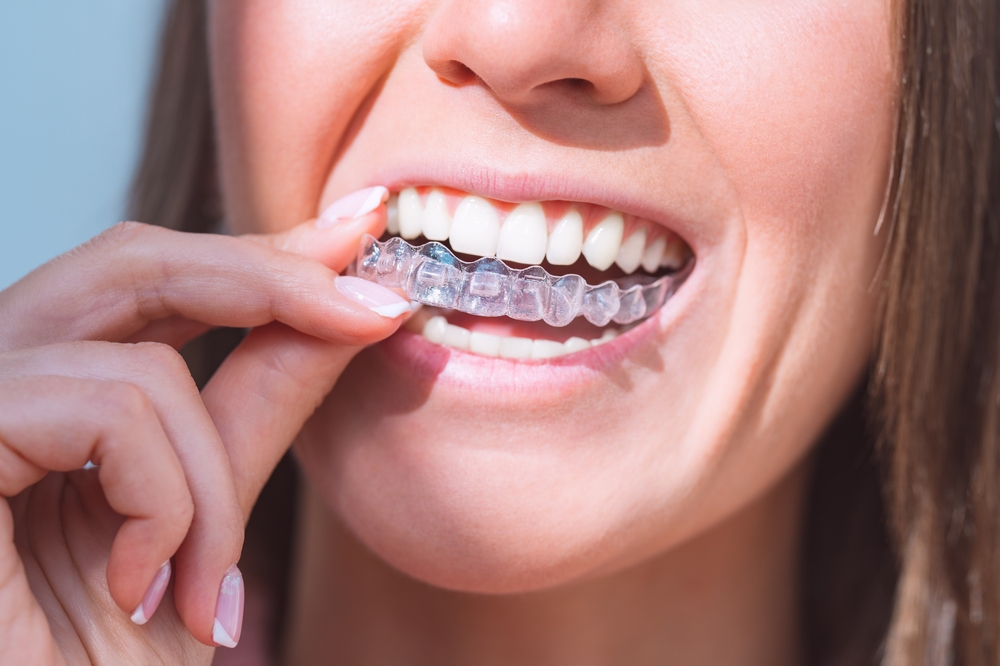Treatment outcome and efficacy of an aligner technique – regarding incisor torque, premolar derotation and molar distalization
The concept of fabricating aligners on setup casts for orthodontic tooth movement dates back to 1945. Nowadays, the increasing demand for invisible orthodontics and aesthetic considerations, primarily across adult patients, has made the use of thermoplastic aligners quite popular.
Elshazly and Elkholy demonstrated that orthodontic forces increased as aligner thickness increased, thus proving that there was a significant influence of the aligner thickness on their biomechanical functionality
By the end of the 1990s, two novel thermoplastic aligner systems were introduced allowing for a wide range of tooth movement. The first implemented setups comprising tooth displacements between 0.5 and 1 mm. This required a sequence of 3 aligners per setup step, with increasing thickness. The second, allowed for setup steps to be reduced to approximately 0.2 mm, so that stiffer aligners could be employed.
There are certain movements that prove to be quite challenging in every day clinical practice; these are mainly the torque and root angulation, extrusion as well as rotation, especially of those more rounded teeth, like the canines and premolars
To Control Premolar Rotation ;
- HemiElliL attachment created the highest moment but only when the tooth was rotated mesial (disto-rotation) = the flat surface of the attachment (located mesial) was more efficient in creating the needed force system to derotate the tooth compared to the bevelled end when the tooth was rotated distal. It seems that the flat end of the attachment works better as an active surface
- ElliPair generated almost twice as much derotational moment, when the tooth was rotated distal compared to the opposite direction = the distal one positioned in the occlusal third of the crown, and the mesial one in the gingival third
- The attachments placed in the occlusal third of the crown could be more efficient in providing much needed aligner retention
- A common side effect we encountered in all the attachment setups was the vertical forces created along the long axis of the tooth (x-axis) , which in almost all occasions were intrusive = When the tooth was rotated mesially, all setups showed an intrusive force
- Interestingly, when the tooth was rotated distally, a few attachments demonstrated an extrusive force as side effect. This probably has to do with the shape of the tooth we used, and with the in vitro nature of our setup: in the absence of an occlusal forces aligner, re-engagement does not occur. Therefore, opposite forces can appear if the attachment is disengaged.
For maxillary molar distalization :
- One of the most common strategies applied in the non Extraction treatment of Class II molar relationship is maxillary molar distalization .The major indication are patients with maxillary dentoalveolar protrusion or minor skeletal discrepancies
- Since 1950’s headgear has been the most frequently used appliance for maxillary molar distalization. Unfortunately this appliance requires considerable patient compliance so several alternative intraoral methods had been proposed to reduce or cut out patient’s cooperation
- Despite the effectiveness of many of these appliances clinicians must consider many side effects: increase in lower face height, clockwise mandibular rotation, extrusion of first premolars, undesirable tipping of the maxillary molars and loss of anterior anchorage during distalization
- The aligner allows the control of 3D movements by holding teeth on all the surfaces (vestibular, palatal , lingual and occlusal) and applying proper forces thanks to attachments of different size and shape and other specific features.
- Aligners can also provide a class II correction by a sequential maxillary molar distalization with a high predictability (88%) of the distalization movement of upper molars if supported by the presence of attachments on the tooth surface assessed by Simon et al. Ravera et al. showed that clear aligners are suitable for distalizing maxillary up to 2-3mm without significant mesiodistal tipping movement, and it seems that this result could be improved if combined with photobiomodulation or other acceleration tooth movement systems
For incisor torque control in cases of extraction ;
- Clear aligner therapy produced the “roller-coaster effect” during anterior retraction in cases of extraction
- Torque compensation caused by power ridges can achieve incisor intrusion and palatal root torque
- In cases of extraction, appropriate torque compensation with a thicker aligner should be designed to ensure bodily retraction of anterior teeth and minimize root resorption, but more attention should be paid to the anchorage control of the posterior teeth.
References :
- https://www.ncbi.nlm.nih.gov/pmc/articles/PMC8966893/
- https://onlinelibrary.wiley.com/doi/10.1111/ocr.12333
- https://www.ncbi.nlm.nih.gov/pmc/articles/PMC6692944/
- https://www.ncbi.nlm.nih.gov/pmc/articles/PMC9670623/








